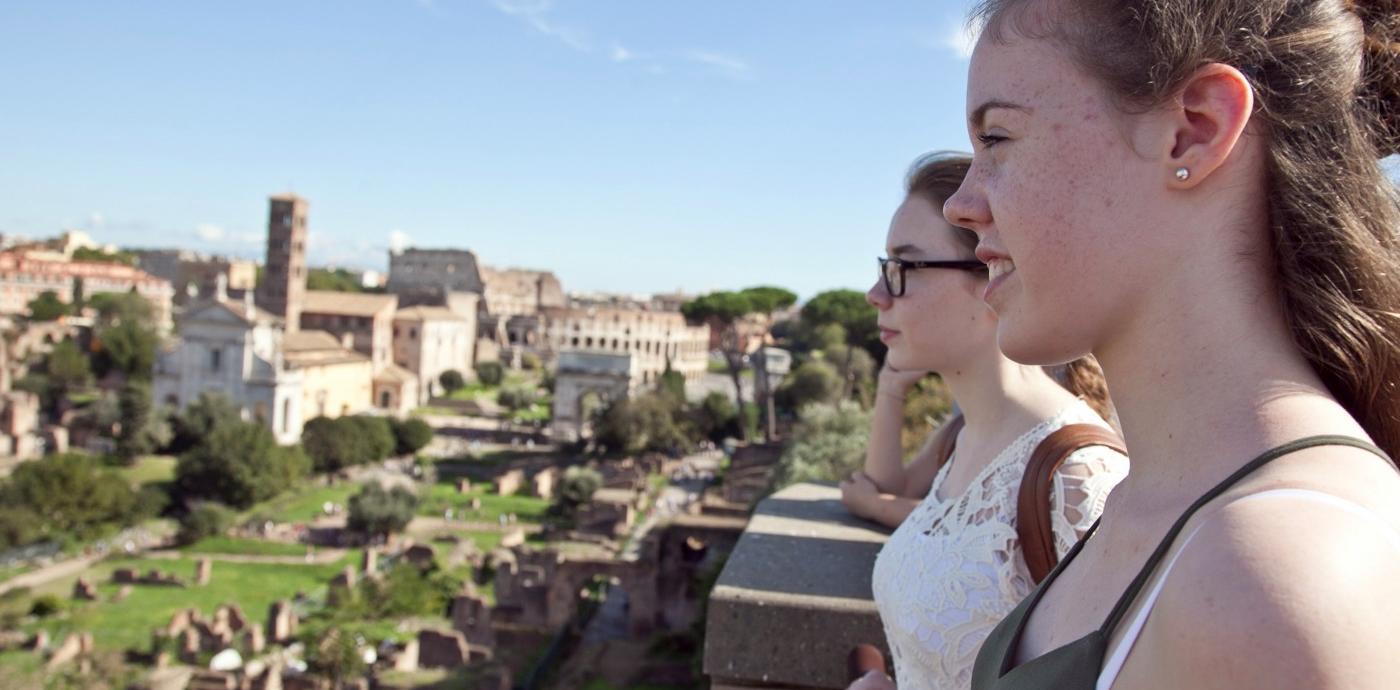History/Classics tour to Rome by air: 5 days, 4 nights
With a wide variety of wonderful sites such as the iconic Colosseum and the Vatican, this tour to Rome will give your students great first-hand experiences and life-long memories. Metro travel makes Rome accessible, but we recommend walking as it enables you to absorb the beauty of this ancient Roman city. Our suggested itinerary offers inspiration, but we will tailor make your tour to meet your specific curriculum needs and exam board specification.
Similar tours
Suggested itinerary
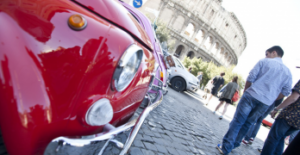
Day one
Fly from the UK to Rome
Transfer to your accommodation
Explore the city on foot
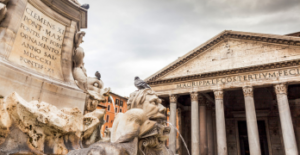
Day two
Colosseum and Forum
Pantheon
Trevi Fountain
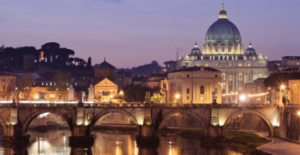
Day three
Vatican
St Peter’s Basilica
Sistine Chapel
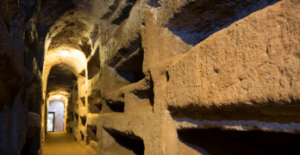
Day four
Ostia
San Callisto Catacombs
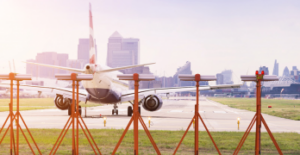
Day five
Transfer to airport
Fly back to the UK
Excursion locator map
Excursion Ideas
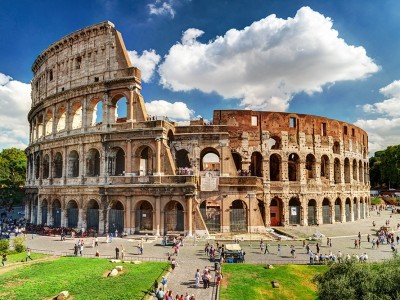
Colosseum
Subject range: Art, Cultural, History, Classics, Geography
What you’ll experience: The Colosseum is an iconic symbol of Imperial Rome and the largest amphitheatre in the world, considered one of the greatest achievements of Roman engineering and architecture. A symbol of the pageantry of the Empire and estimated to hold between 50,000 and 80,000 spectators, it was used for gladiatorial contests as well as other public spectacles such as dramas based on Classical mythology. Construction began in 70 AD under Emperor Vespasian. The last recorded games were held there in the 6th century. The monument’s damage was mostly caused by earthquakes. The present-day exterior of the Colosseum is in fact the original interior wall.
Select says: Students will easily be able to imagine shows at the arena and will find it humbling to follow in the steps millions have taken before both as tourists and gladiators. Guides tell the many secrets this historical monument holds and will provide a wealth of information such as the origins of our language – for example, did you know the word ‘arena’ comes from the Latin word for sand which was used to cover the stage where the action took place?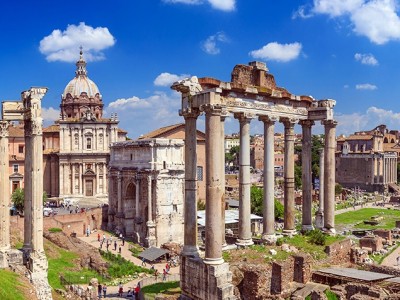
The Roman Forum and Palatine Hill
Subject range: Art, Cultural, History, Classics, Geography
What you’ll experience: Once the heart of Roman public life, the Forum is a plaza in the centre of Rome surrounded by the ruins of important ancient government buildings. Many events took place here including public speeches, trials and elections. Located in the small valley between the Palatine and Capitoline hills.
Select says: According to tradition, the Forum’s beginnings are connected with the alliance between Romulus, the first king of Rome controlling the Palatine Hill, and his rival, Titus Tatius, who occupied the Capitoline Hill.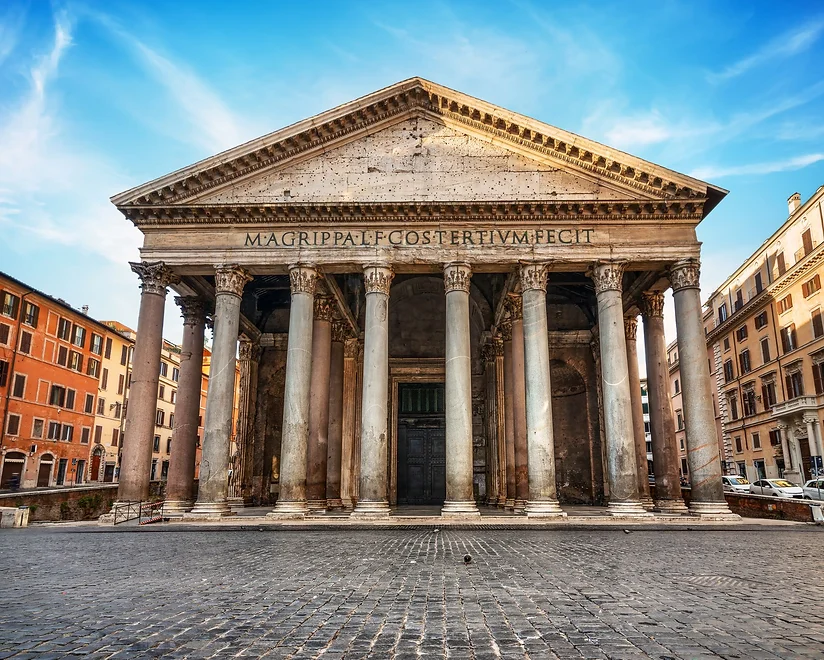
Pantheon
Subject range: History, Classics, Geography
What you’ll experience: The Pantheon, built 118-128 AD, is the most complete and best preserved of the ancient temples due to being in continuous use throughout history. Since the 7th century it has been used as a Catholic Church, dedicated to St. Mary and the Martyrs. The space inside is awe-inspiring – a perfect sphere symbolising the vault of heaven with the height of the dome the same as its diameter creating perfect balance and unique harmony.
Select says: Pantheon is derived from the Ancient Greek word ‘Pantheion’ meaning ‘of, relating to, or common to all the gods’.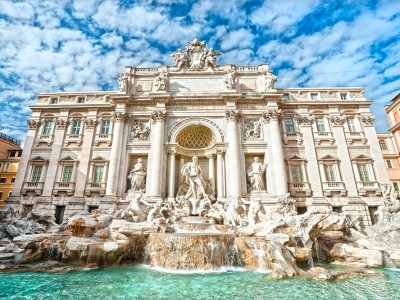
Trevi Fountain
Subject range: Art, Cultural, History, Classics, Geography
What you’ll experience: The largest Baroque fountain in the city, the Trevi Fountain is a beautiful, imposing construction that features the central figure of Neptune flanked by two Tritons – one struggles to master an unruly sea horse, the other leads a more docile animal (this symbolises the two contrasting moods of the sea). A traditional legend holds that if visitors throw a coin into the fountain, they are ensured a return to Rome.
Select says: The fountain is mostly built of travertine stone. The largest building in the world constructed mostly of travertine is the Colosseum in Rome.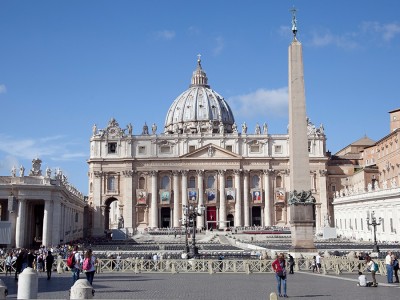
The Vatican City, St Peter's Basilica and the Sistine chapel
Subject range: Art, Cultural, History, Classics, Geography
What you’ll experience: The Vatican is the smallest state in the world. It’s full of places of interest to be discovered including the Vatican grounds and Museum with fabulous art work such as the wondrous Michelangelo masterpieces in the Sistine chapel, St. Peter’s Basilica with its beautiful Renaissance architecture, and St. Peter’s Square with the impressive Egyptian obelisk at its centre.
Select says: It is best to visit the Vatican first, entering as early as possible in the morning to avoid the crowds (skip the line with Select’s fast pass into the Vatican) and then make your way to St. Peter’s Basilica. Our tour guides can tailor your tour to suit your requirements.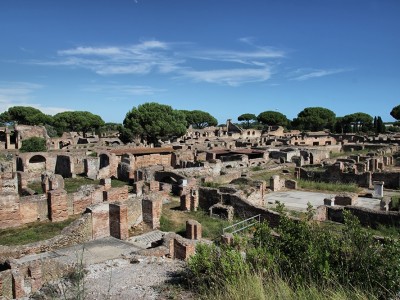
Ostia
Subject range: History, Classics
What you’ll experience: Situated at the mouth of the Tiber about 25 km from Rome, Ostia Antica is the ruins of a harbour city dating back to the 4th century B.C. Things to see include bath houses, temples, large mosaics, traces of frescoes, a mill, public bathrooms, and a theatre. Over the past two thousand years the mouth of the Tiber has silted up, pushing the coastline away from Ostia.
Select says: In 68 BC the town was attacked by pirates, during which the port was set on fire, the consular war fleet was destroyed, and two prominent senators were kidnapped.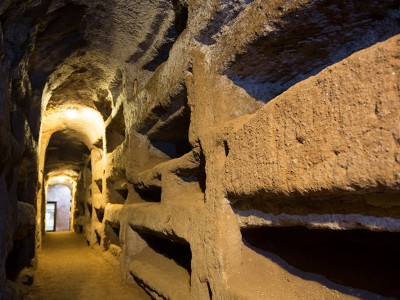
Catacombs of St. Callixtus
Subject range: Classics
What you’ll experience: Deep underground you will see the Christian burial chambers that originated about the middle of the second century. The underground cemetery includes several areas – the Crypts of Lucina and the area of the Popes and of St. Cecilia are the most ancient areas.
Select says: Look for symbolism within the catacombs which Christians depicted on the walls of the catacombs and were often carved on the marble-slabs which sealed the tombs. Find out lots more about the catacombs here.
History/Classics trip to Rome by air: 5 days, 4 nights Accommodation
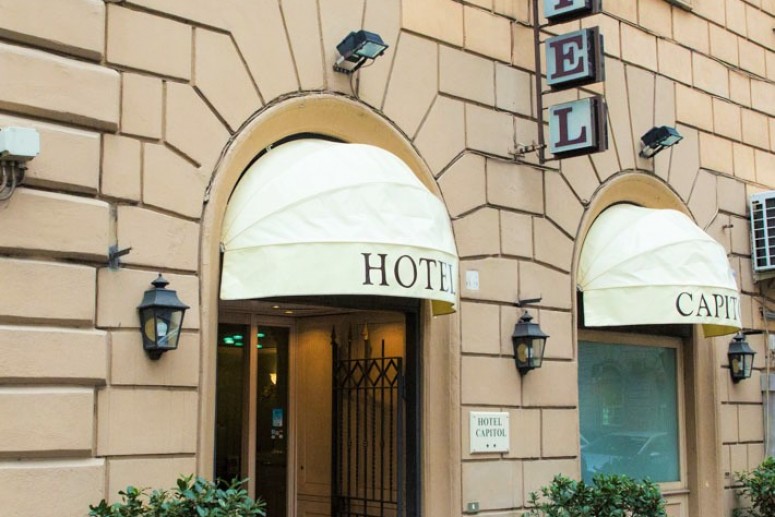
Hotel Capitol
Location:
Capacity: 100
The Hotel Capitol is ideally located near to the Roma Termini Railway Station in the historical centre of the city, and is close to all the main monuments. The Hotel Capitol is located in a historic late Nineteenth century building and staff are friendly and English speaking. A great choice for your school tour to Rome!
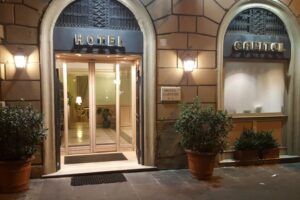
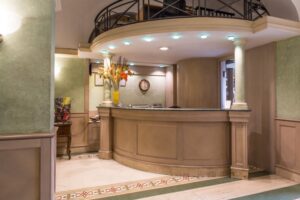
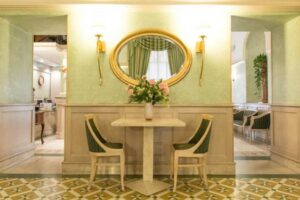
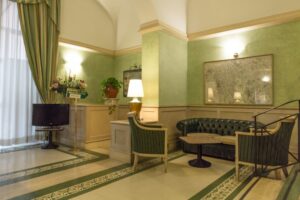
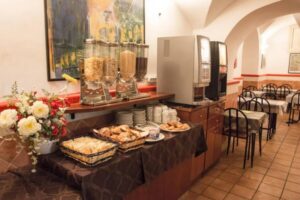
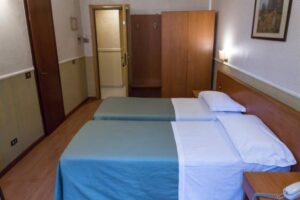
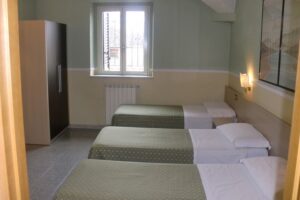
Rooms: All rooms have en-suite facilities, TV, air conditioning and WiFi.
Facilities: Comfortable reception, the rooms occupy the six upper floors and can be reached by a modern elevator from the mezzanine floor.
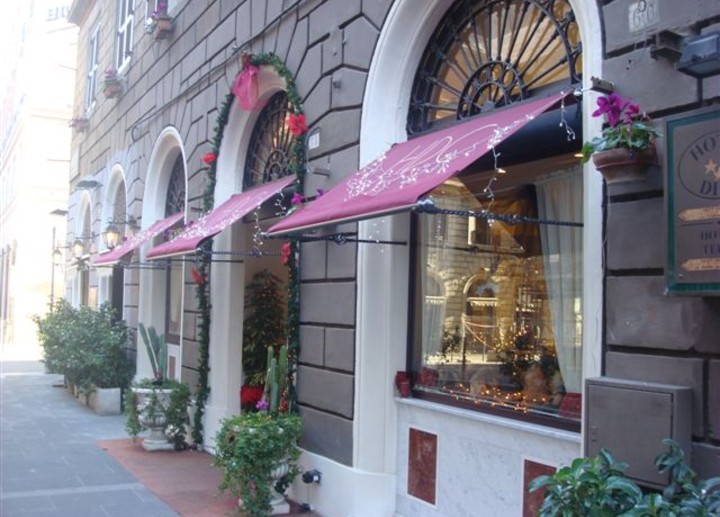
Hotel Dina
Location: Rome
Capacity: 100
Centrally located in Rome, close to the main train station. The Hotel Dina offers authentic Italian style accommodation in a great location.
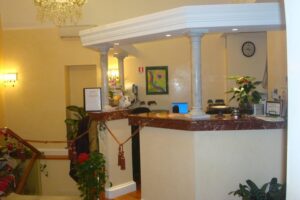
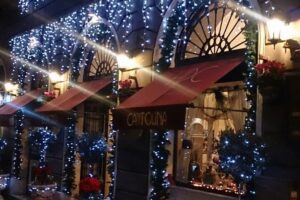
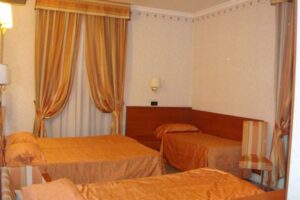
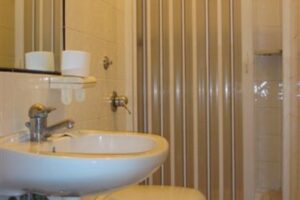
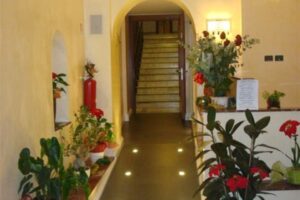
Rooms: Bedrooms with en-suite bathroom, television, radio.
Facilities: Reception, breakfast room.
Links to Learning
Learning areas:
Learning areas:
KS3 Learning areas: the study of the social, cultural and political values and beliefs of the Romans; know and understand significant aspects of the history of the wider world: the nature of ancient civilisations; the expansion and dissolution of empires;gain and deploy a historically grounded understanding of abstract terms such as ‘empire’, ‘civilisation’; understand historical concepts such as continuity and change, cause and consequence, similarity, difference and significance, and use them to make connections, draw contrasts, analyse trends, frame historically-valid questions and create their own structured accounts, including written narratives and analyses; understand the methods of historical enquiry, including how evidence is used rigorously to make historical claims.
KS4
OCR Ancient History
- The origins of Rome: The kings, 753–508 BC
- Hannibal’s invasion and defeat, 218–146 BC
- The Hellenistic world 323–133 BC
OCR Classical Civilisation
- City Life in the Classical World
- Community Life in the Classical World
- Culture and Society in the Classical World
OCR Latin
- Demonstrate an understanding of the cultural, historical and literary context in which the literature was composed
- Select, analyse and evaluate evidence to draw informed conclusions and make a reasoned, evidence-based response to the material studied.
- Use a range of ancient sources including literary, inscriptional and archaeological
- Identify aspects of content, culture, social practices and values, as appropriate to the sources studied
AQA Classical Civilisation
- Greece and Rome: Stories and Histories
- Greece and Rome: Drama and Life
- Greece and Rome: An Evaluative Study
KS5
AQA Classical Civilisation
- Roman Architecture and Town Planning
- Roman Epic
- Women in Athens and Rome
- Menander and Plautus – society and values
- The Life and Times of Cicero – history and politics
- The Second Punic War
OCR Classical Civilisation
- Comic Drama in the Ancient World
- Roman History: the use and abuse of power
- Roman Society and Thought
- City Life in Roman Italy
OCR Latin
- Understand and appreciate the literary context from which the set texts have been taken by reading an appropriate selection of ancient literature in English translation
- Understand and appreciate, as appropriate, the social, cultural and historical contexts for the set texts, their authors and audiences
- Demonstrate appropriate historical and/or cultural knowledge when necessary for the understanding or evaluation of a given phrase, sentence or passage
Select Extras:
Try the resource ‘Time for Kids’ for a history timeline and more.
How about giving your students a taste of the Italian language pre-tour? Try these resources:

